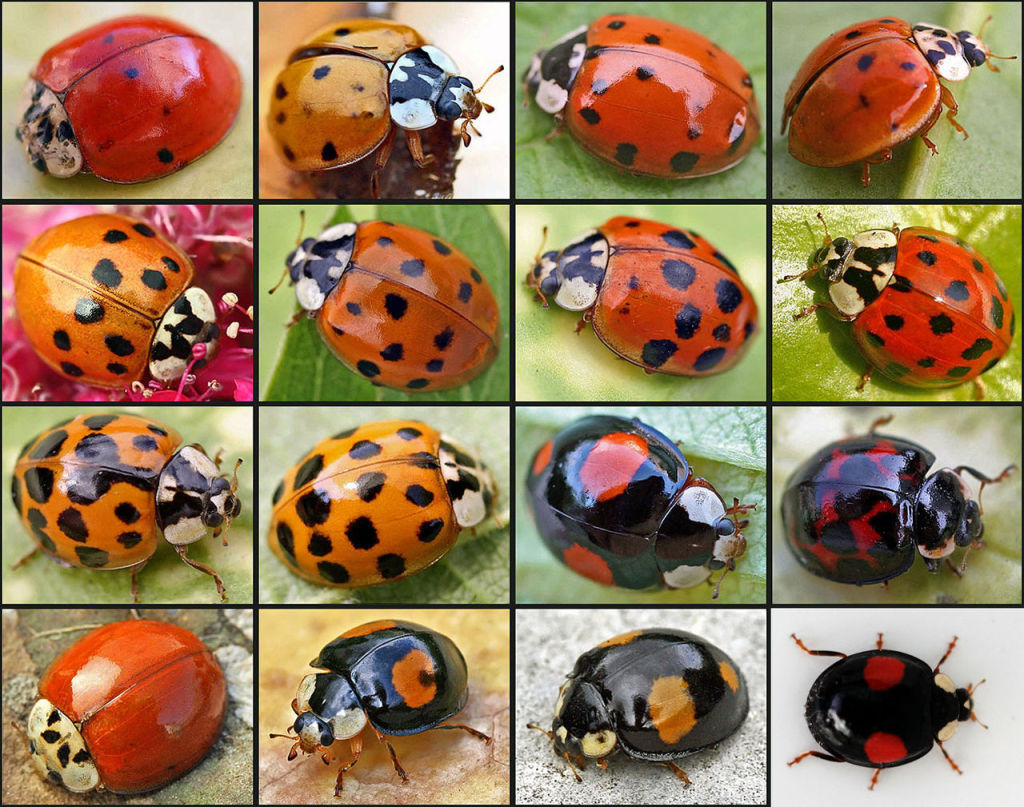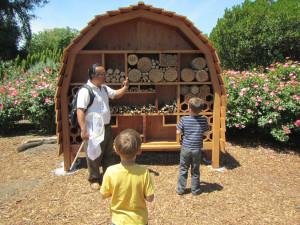Q: Starting November 1st, I have had a lot of ladybugs in my kitchen and living room, and some seem stuck on the kitchen curtain, but they move every now and then. They seem to be sleeping, and several are walking around on the walls. Should i take them outside? I’ll leave them until someone can inform me.
-Drew Fenton, Boulder Creek, Calif.
Weighing in on this one is Eddie Dunbar, the founder of the Oakland-based Insect Sciences Museum of California (ISMC), an organization that that promotes insect literacy. Here’s his answer:
A: California fauna is changing. There was a time when a lady beetle alighting upon you was considered a sign of good luck. With the change in California fauna this may no longer be true.
In the Bay Area there are a few lady beetles that overwinter in groups. The better known is the native convergent lady beetle (Hippodamia convergens). These converge outdoors, are harvested for sale in nurseries and are widely used for biocontrol of aphids in gardens and agriculture. H. convergens does not make a habit of coming indoors.
Without a doubt, your home invader is Harmonia axyridis. This beetle is widely known to overwinter in homes. It was imported into California for biocontrol of plant pests in 1916, repeatedly in the 1960s, and in other U.S. states. In 1988 it became established in North America. It also is widely sold for aphid control.
H. axyridis goes by many common names. Its official name is the multi-colored Asian lady beetle. It is a beetle that has many color pattern morphs. It can be red with black dots, black with red dots or blotches and it can have no dots at all. The common marker for many of the morphs, though, is a characteristic “M” pattern on its thorax when observed from above. An H. axyridis larva looks like a tiny red and black alligator with four rows of spines along the length of its abdomen.
A home visitation by this lady beetle is not unique. This lady beetle is known to congregate in the warmer, sunnier sides of the home. Your kitchen and living room probably are just what they are looking for. Their periodic movement probably is in line with the heating and cooling of those rooms. Taking them outside will only prompt them to seek other shelter and they may just reappear in your home!
To prevent reinvasion you will need to caulk and seal your home. This should be done, anyway. There are other, nastier home invaders in your wooded area of Boulder Creek. Cluster flies, the pests that invaded the home in the based-on-true-events movie The Amityville Horror breed in forests and use homes as overwintering habitat. More recently, a Chinese bug, the brown marmorated stink bug, has begun a pungent invasion homes. I’m sorry to say that what appears above is the good news.
Your suspect beetle, like most lady beetles, exudes hemolymph (insect blood) through a process called “reflex bleeding.” It is the yellow liquid that appears on fingers when lady beetles are handled, and is the aggregation cue to which other lady beetles hone in. It is a toxin which the beetle uses to protect itself and is an irritant in humans. It also is the prominent cause (published by immunology journals) of allergic rhinitis, asthma, and urticaria. Lady beetle allergies among humans in some locations are reported to be as high as 10 percent!
Again, California fauna is changing. Our childhood harbinger of good fortune is now, given the influx of a nonnative species, known to be an indoor allergen. And with the recent cold and rainy weather, invasions will only increase. It seems that just when we thought that allergy season was over, another allergy season begins indoors.
Ladybug, ladybug, fly away home!
P.S. “Lady beetle” is now the official name of the insect formerly known as “ladybugs,” since this insect is a beetle and not a true bug. Beetles can be distinguished from all other insects by having the seam where their wings come together appear straight down the middle of their backs. Here’s more on why a beetle is not a true bug.





